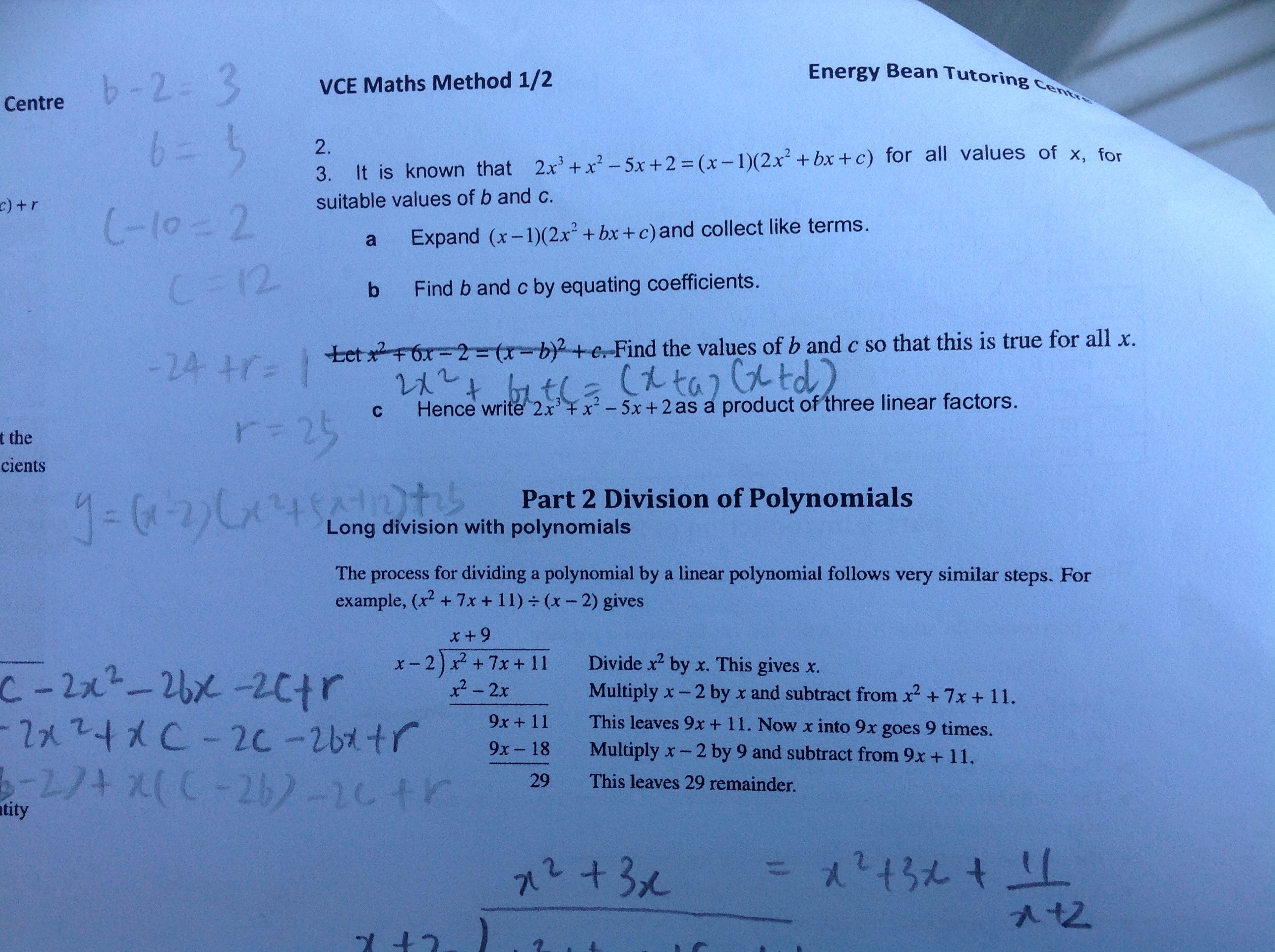According to remainder theorem if #f(x)# is divided by #(x-a)#, then remainder is #f(a)#. Therefore if #(x-a)# is a factor of #f(x)#, #f(a)=0#.
Now coming to questions raised by you solution is given seriatim.
(a) As #f(x)=x^n-a^n#, dividing by #x-a# gives a remainder #f(a)=a^n-a^n=0#. Hence #x^n-a^n# is divisible by #x-a#.
(b.I) As #f(x)=x^n+a^n#, dividing by #x+a# gives a remainder #f(a)=(-a)^n+a^n=(-1)^na^n+a^n#. This will be #0# only if #n# is odd. Hence the condition for #x+a# to be a factor of #x^n-a^n# is #n# is odd.
(b.II) As #f(x)=x^n-a^n#, dividing by #x+a# gives a remainder #f(a)=(-a)^n-a^n=(-1)^na^n-a^n#. This will be #0# only if #n# is even. Hence condition for #x+a# to be a factor of #x^n-a^n# is #n# is even.
3 c As #f(x)=2x^3+x^2-5x+2#, the factors are of the type #x-a#, where #a# is a factor of #2/2# (#p/q# where #p# is constant term and #q# is coefficient of highest power of #x#) i.e. #+-1# or #+-2# or #+-1/2#. As #f(1)=0#, #f(2)=0# and #f(1/2)=0#, hence factors are #x-1#, #x-2# and #2x-1# i.e. #2x^3+x^2-5x+2=(x-1)(x-2)(2x-1)#.
3.7 When #P(x)# is divided by #(x-1)#, remainder is #2#, hence #P(1)=2# and as when #P(x)# is divided by #(x-2)#, remainder is #3#, hence #P(2)=3#.
(a) As #P(x)=(x-1)(x-2)Q(x)+ax+b#,
#P(1)=2# gives us #a+b=2# and #P(2)=3# gives us #2a+b=3#.
Subtracting former from latter, we get #a=1# and hence #b=1#
(b.I) As #P(x)=(x-1)(x-2)Q(x)+ax+b# and #P(x)# is a cubic polynomial, with coefficient of #x^3# as #1#, it is of the type
#P(x)=(x-1)(x-2)(x-k)+x+1#. Now as #-1# is a solution to #P(x)=0#, we have
#P(-1)=(-1-1)(-1-2)(-1-k)-1+1=-6-6k=0#
i.e. #k=-1# and #P(x)=(x-1)(x-2)(x+1)+x+1# or
#P(x)=x^3-2x^2-4x-1#
(b.II) It is apparent that as #P(x)=(x-1)(x-2)(x+1)+x+1#, #(x+1)# is a factor of #P(x)# and
#P(x)=(x-1)(x-2)(x+1)+x+1#
= #(x+1)(x^2-3x+2+1)=(x+1)(x^2-3x+3)#
As discriminant in #x^2-3x+3# is #3^2-4xx1xx3=9-12=-3#,
there is no other real factor.
![![enter image source here]](https://useruploads.socratic.org/bfVtctMsTSCOanBT92yf_image.jpg) (
( )
) ![![enter image source here]](https://useruploads.socratic.org/bfVtctMsTSCOanBT92yf_image.jpg) (
( )
) 